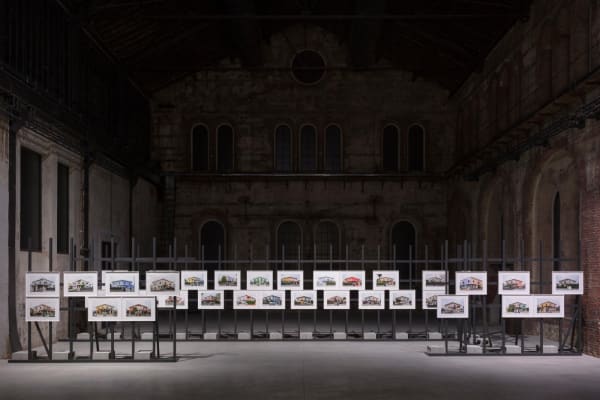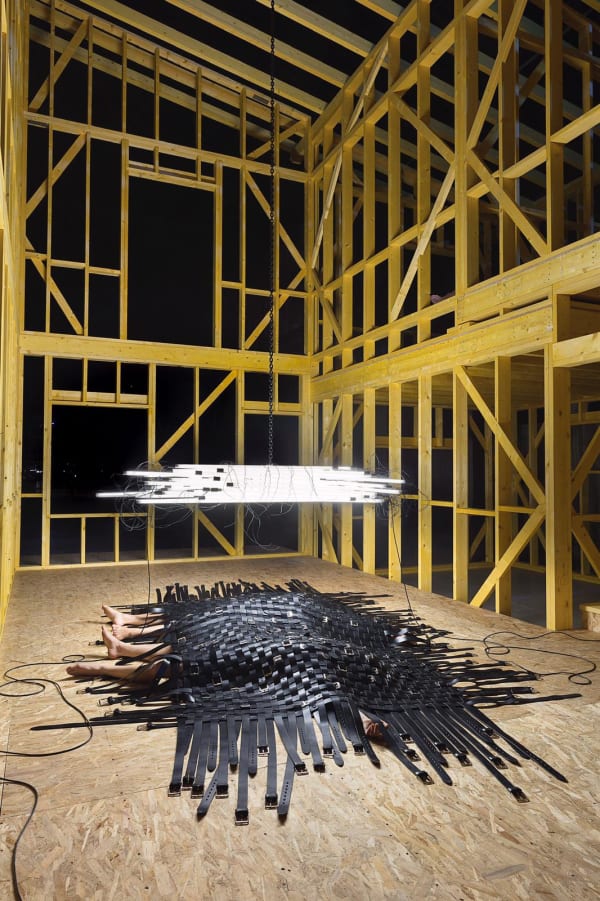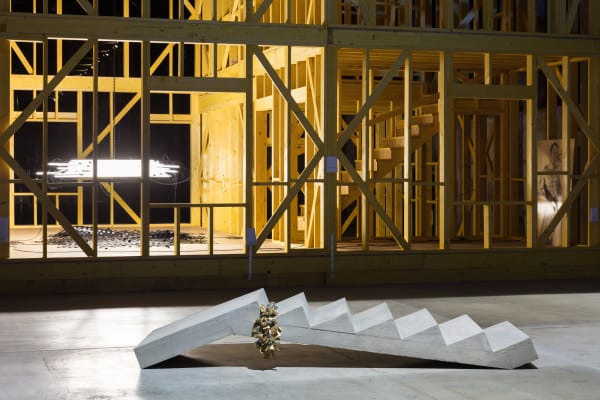Monica Bonvicini: As Walls Keep Shifting: OGR - Officine Grandi Riparazioni, Turin, Italy
OGR - Officine Grandi Riparazioni is pleased to present the solo exhibition As Walls Keep Shifting by Monica Bonvicini, a large scale intervention into OGR’s former industrial premises.
The new installation delves into Bonvicini’s interest in architecture, its history, its memory, imposed regulations and habits. Her research materializes in site-specific installations in which the architecture of the exhibition space is taken as a starting point for institutional critique and spaces are curated to engage the audience on a direct and physical way.
The title As Walls Keep Shifting is taken from a line by Mark Z. Danielewski’s House of Leaves: the novel offers a powerful metaphorical image of the relation with the built environment. The reference to walls is particularly poignant in relation to the artist career: in the last twenty years, Bonvicini has often reflected on walls, producing them, destroying them but also taking them as the starting point for installations, sculptures, videos or photographs.
As Walls Keep Shifting takes the gesture of “building a house” as an artistic exercise and performs it in diverse ways and manners, continuously shifting its forms and concepts. The project provides a timely questioning of individual place-making as the establishment of private space altogether with its resulting discontents, such as isolation, exclusionary dynamics, disappointment and the rise of reactionary feelings.
For this show Bonvicini is literally cutting the exhibition space in two, using theatrical lights to create a stage for her sculptures and photographs. She builds a large structure in the form of a house inside the former railway workshop of OGR. Built out of a wooden skeleton, in the California fashion, the house is left empty of walls, windows, cabling and facilities. Bonvicini has borrowed the structure’s architectural plan from a typical residential two-families house built across northern Italy in the 60s and 70s. The original plans are cut in half, and the artist builds only one part: the gesture decisively creates a negative space where the lack of the mirroring part of the house prompts visitors to consider the venue’s hall.
Inside the house, there is a new work: White Out (2019). The piece is emblematic of Bonvicini’s light works: questioning the legacy of late modernism and its adherence to industrial production methods, the work assembles mass-manufactured items into a fully functioning yet chaotic, intentionally flawed structure.
Structural Psychodrama # 4 (2019), a flight of concrete stairs, tied with a chain adorned by lots of padlocks, is installed outside the house, as to create an illusional situation of an outdoor piece. The collection of padlocks locked together - with its immediate association to an urban kitsch symbol of romance - is confronted with the raw appearance of the horizontally lying slab of the concrete stairs. The former’s connotation of merry ending is paired with the latter’s appearance as something unfinished, abandoned and then forgotten.
At the far end of the exhibition space stands the actual starting point of the show: the photographic series Italian Homes (2019) Bonvicini has been working on for the last two years. Each photograph differs from the others only in the way in which the houses have been modified (remodeled, repainted or decorated) by their inhabitants. The new variety of facades contrasts with the foundational idea of the social project of these architectures, conceived to provide equal conditions of dwelling for homogenous social groups. As such, the series discusses individuality and singularity set against the standardization and homogenization of ‘practical life.’
While Bonvicini’s photographic choices for the series may recall a rich art historical background, referencing a broad artistic context, the artist has also been inspired by a series of literary works that describe domesticity as The Collected Stories of Diane Williams. The suburbs, rural areas and various peripheries, the idea of revisiting the places of origin as a way to trespass the thresholds of economic, social and political bubble are at the core of a reflection on the current fractured
state of society.
Courtesy of the artist
© Monica Bonvicini and VG-Bildkunst, Bonn 2022, Photo: Andrea Rossetti






